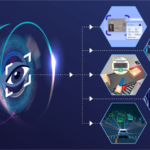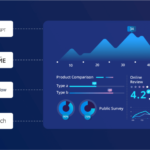
Introduction
Robotics is always on the edge and the new comer is neural networks for robots leading to artificial intelligence. Al relates to the ability of making machines intelligent, learn habits and reach decisions as they do it themselves.
Such networks promote automation, which increases efficiency and accuracy of the concerned work. Neural network controlled robots are capable of learning from their situations and challenges around them and solve them. It spans across all industries from industrial automation to self-driving cars.
It is crucial to know about Artificial Neural Network in Robots. Thus it is worthy to discuss their role and the advantages of their existence as well as prospects for the future.
What Are Neural Networks?
Neural networks emulate that of the human mind in its design pattern. Consequently, they’re made up of different levels of interconnecting cells known as neurons. These nodes treat information and analyze patterns of thoughts. It is self-learning through training.
Information that enters a neural network passes through layers where some manipulation occurs to them. It assists to decisions of the machine, or in other words, get information to decide on what the machine must do next.
Neural networks are the main components of artificial intelligence in robots. They allow machines to have the ability to learn from data as well as the general experience.
Types of Neural Networks Used in Robotics
There are several neural networks which are designed for various operations to be performed by the robot. CNNs are used in processing of visual information. It should be noted that systems like speech are sequential data, well managed by Recurrent Neural Networks (RNNs).
DNNs handle tasks well indeed in their complex nature. Both of them have unique characteristics that makes the former focus on various aspects of AI automation. Depending on the robotic function, there is a need to choose the proper network. These networks are co-ordinate for higher level of robotic control.
How Neural Networks Enhance Robotics
There are various ways in which the efficiency of robots is enhanced through the integration of neural networks. They provide perception and facilitate the ability of the robots to identify the objects. These are used for decision making processes in dynamic nature of environments.
Shustack goes further in asserting that learning capabilities make it possible for business entities to change to new tasks. Neural networks also refine motion control.
That way the movements will be more fluid and coordinated compared to movements produced by short motor unit proteins that are activated by individual motor neurons. This is a great advantage of automation since they have the capability to analyze the huge data sets.
Applications in Industrial Automation
Robots that incorporate a neural network are used in factories due to efficiency. This is because, in employ of artificial intelligence, quality checks in machines are also done automatically. Robots also help to minimize the gaps in the production line.
networks are used in scheduling and management of maintenance. This alleviates operational costs and time that would have been taken up by carrying out several tests before the official launch of the project.
AI-driven automation improves overall productivity. It helps industries to improve various processes through fast and accurate procedures.
Role in Autonomous Vehicles
Self- driving automobiles cannot function without the use of Apache neurons. AI uses sensors to process data related to the availability of objects in the surroundings. These networks help in route planning and controlling of different modes of transport within the communities.
Self-driving cars are trained drivers through the simulation of real-life experiences. The technology cuts down a lot of intervention of human beings in the transport system. It enhances safety since it is likely to provide a recommendation on possible dangers. This way, self-driving makes autonomous mobility more dependable through the use of these neural networks.
Healthcare Robotics and AI
It is very important to know that there are many sub-disciplines of Robotics and medical robots require the use of neural networks. It is used in operation theaters because it enhances sensitivity during operations.
Robots perform various tiring healthcare tasks within a shorter time than a human being would take. Neural networks are used in the diagnosis of most medical images.
Dear Sir/madam, AI technology in robots assist in the care of the elderly, Doorstep care for elderly people by msg. They provide companionship and assistance. It improves the availability as well as efficiency of healthcare services.
AI-Powered Humanoid Robots
These robots simulating human beings have a network in their bodies known as a neural network that dictates their interactions. These machines are capable of speech recognition, as well as identifying one’s facial expressions.
They use AI when it comes to issues to do with emotions so that they can handle them as expected. Neural networks can effectively introduce new knowledge to robots. They incorporate new behaviors that are better than their previous ones as a result of accumulation of experiences garnered in various fields.
Such robots are used in customer relations and for providing care to the elderly or the sick. AI improves their communication ability also they are flexible in their work.
Challenges of Implementing Neural Networks
Nevertheless, some issues are still present in the field of AI robotics. This means that neural network learning entails extremely large datasets. High computational power is necessary. Hence, improper training is capable of leading to wrong conclusions being made.
Such issues of ethical concern are evoked around AI decision making. Implementing these networks is costly. These are some of the issues that need to be researched and developed to overcome the challenges that are in place.
Future of Neural Networks in Robotics
The future holds immense potential for AI in robotics. A key impact area that concerns the decision-making process is the improvement of the deep learning system of an organization. Robots will gain greater autonomy.
The use AI in several sectors will continue to grow apace. Definitely, a better neural network will enhance the efficiency of a robot that needs the best way to get the box.
Organizational members will engage with machines that exhibit artificial intelligence at the workplace. Neural networks will remake the concept of automation in the end.
Ethical Considerations in AI Robotics
Some of the questions or issues of concern include: When it comes to ethical questions raised revolving around Artificial Intelligence, one is as follows: Decision-making transparency is essential. AI biases must be minimized. Job loss as a result of integration of technology leads to losses.
It is clear that the questions of privacy and security are relevant and require answers. This means that it is highly imperative that ethical practice be adopted in the development of artificial intelligence technologies. The use of artificial intelligence in an appropriate way is helpful to the society.
Conclusion
Neural networks for robots are a phenomenon in the sphere of automation. It improves its learning process and decision-making powers, and flexibility. Industries benefit from AI-driven efficiency. Challenges exist, but advancements continue.
The future promises smarter, more autonomous robots. Ethical considerations remain vital. Neural networks as the leading form of artificial intelligence in the following generation. It is a new technology that’s changing how robots behave in the world today.bots are transforming automation. They enhance machine learning, decision-making, and adaptability.
Industries benefit from AI-driven efficiency. Challenges exist, but advancements continue. The future promises smarter, more autonomous robots. Ethical considerations remain vital. Neural networks will shape the next era of AI automation. This technology is revolutionizing the way robots interact with the world.







